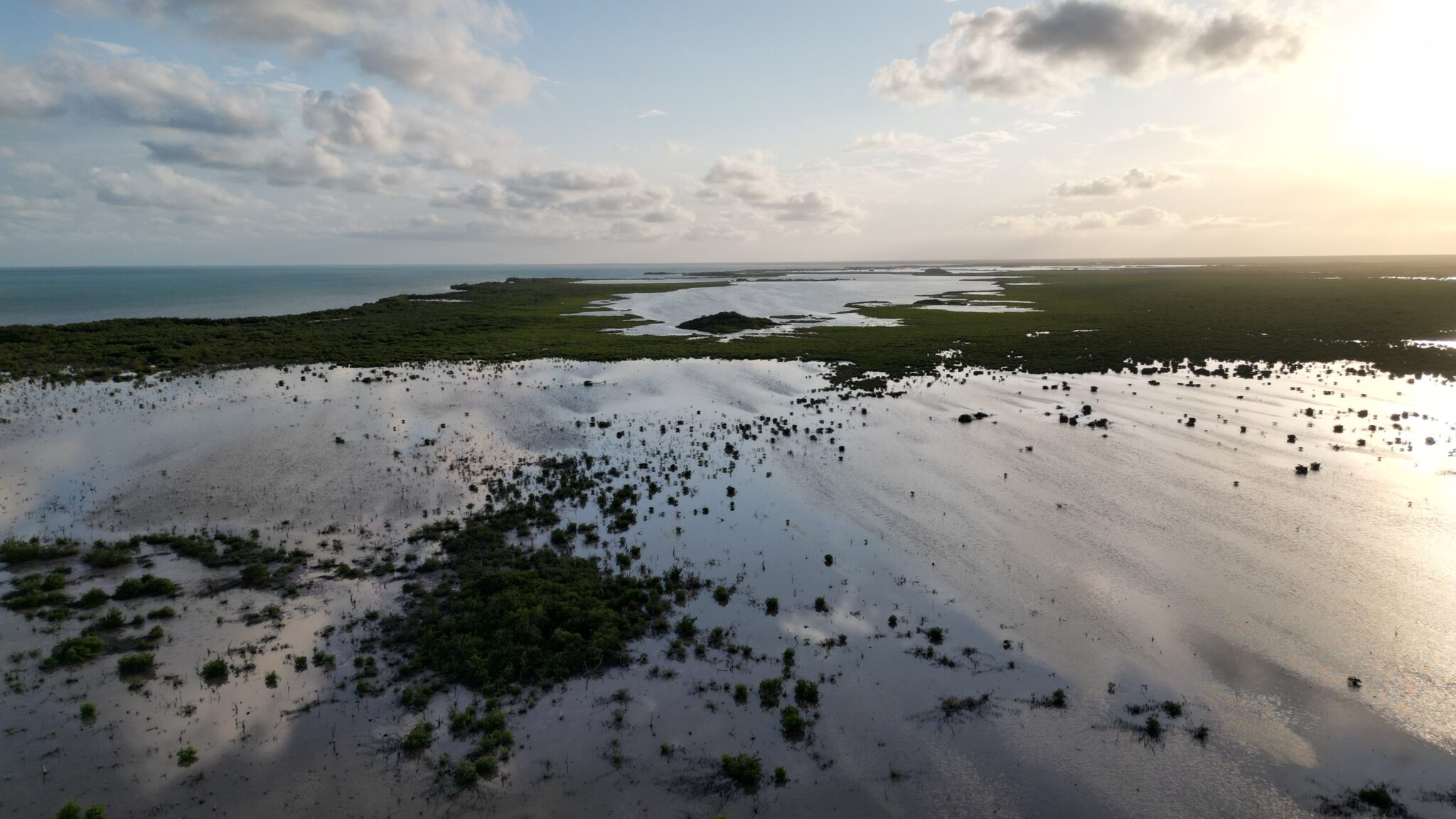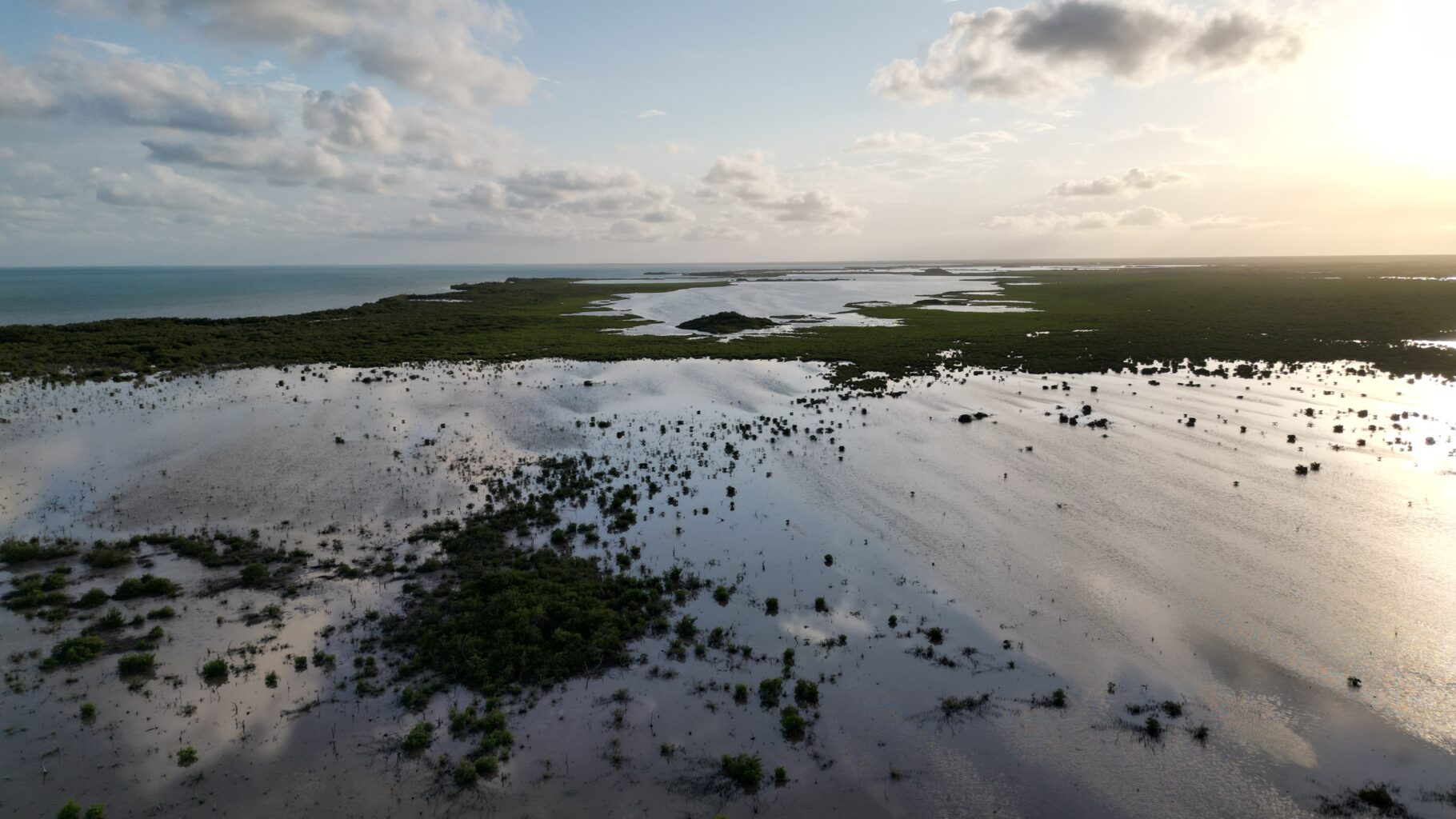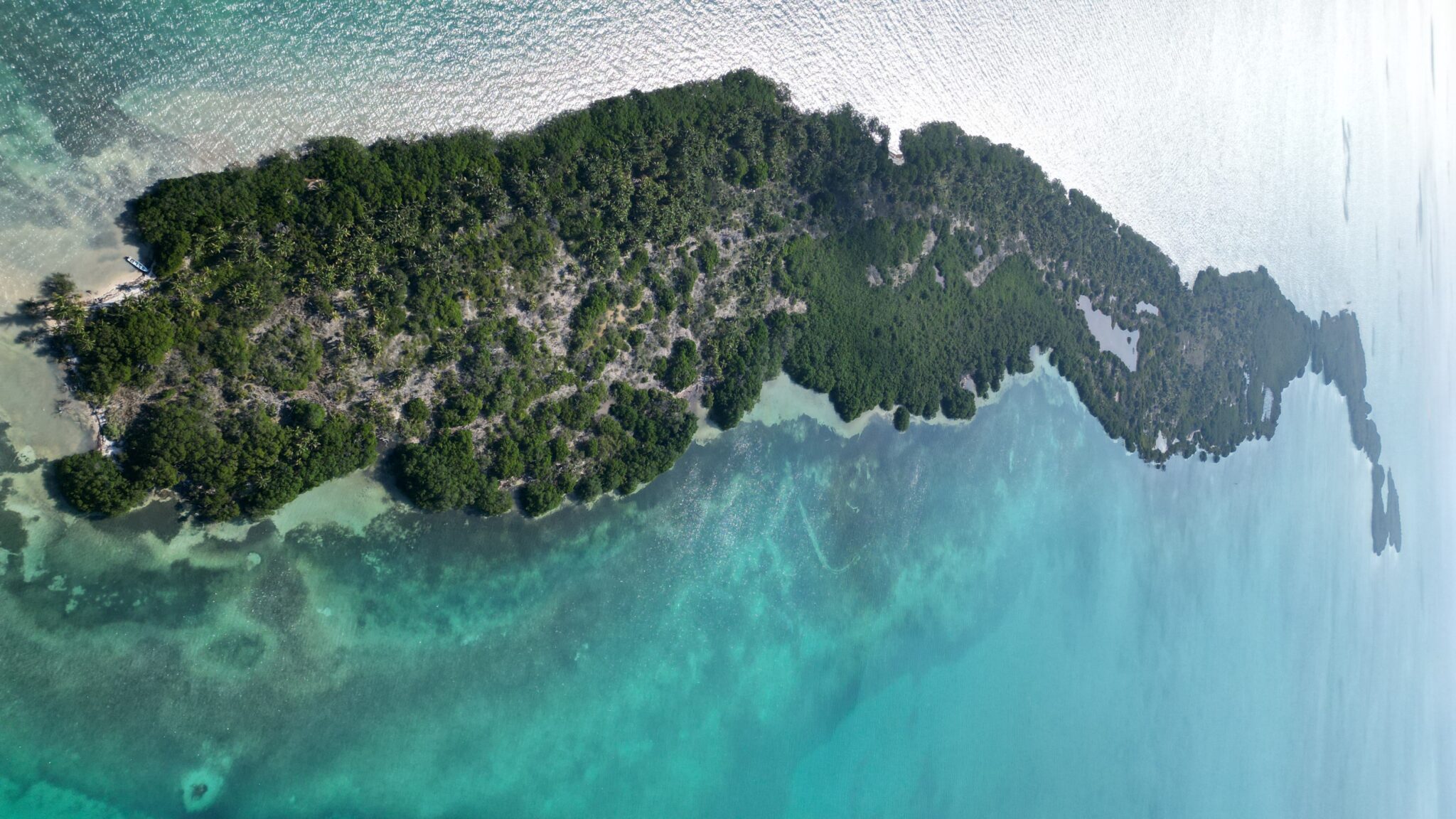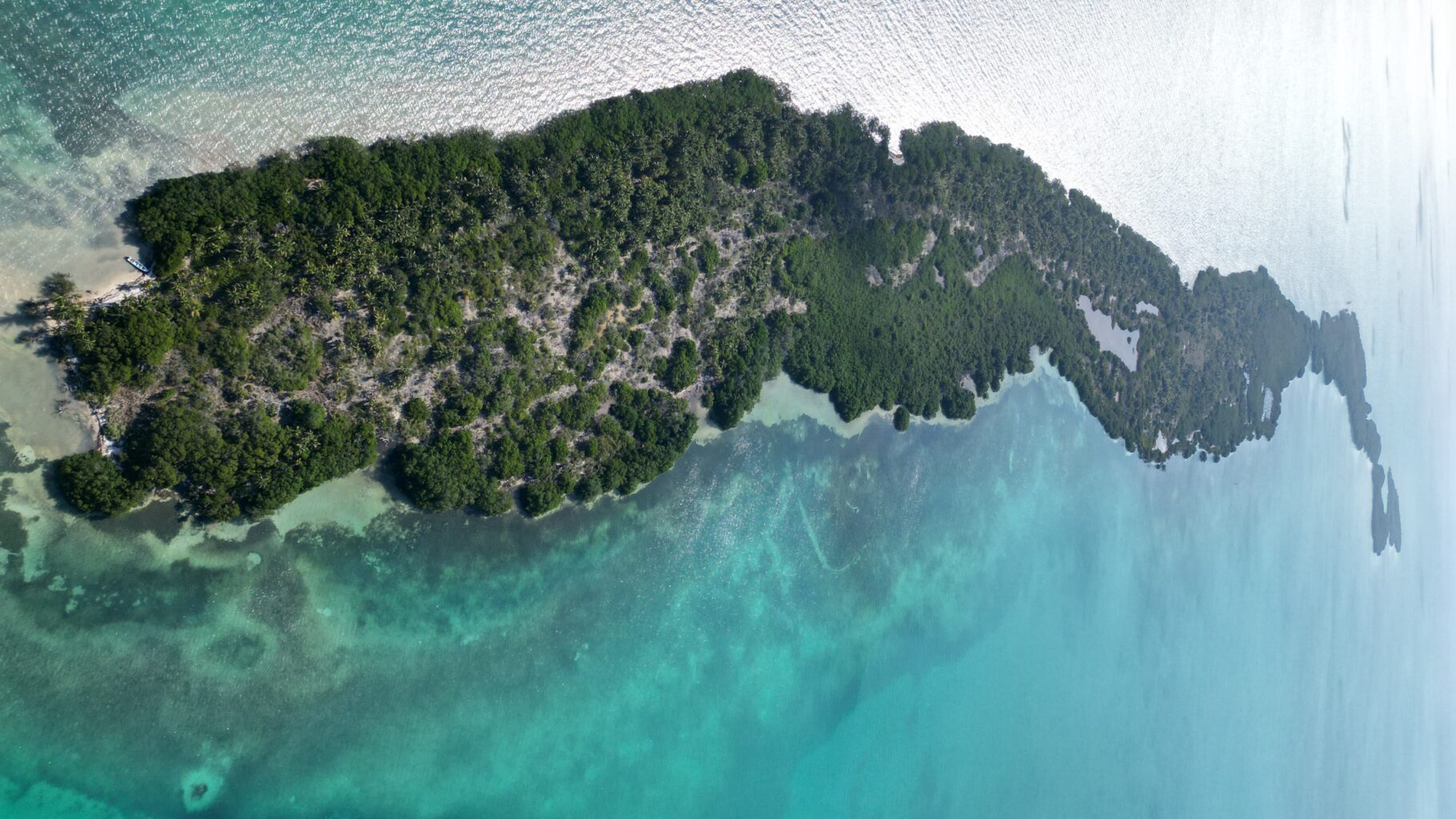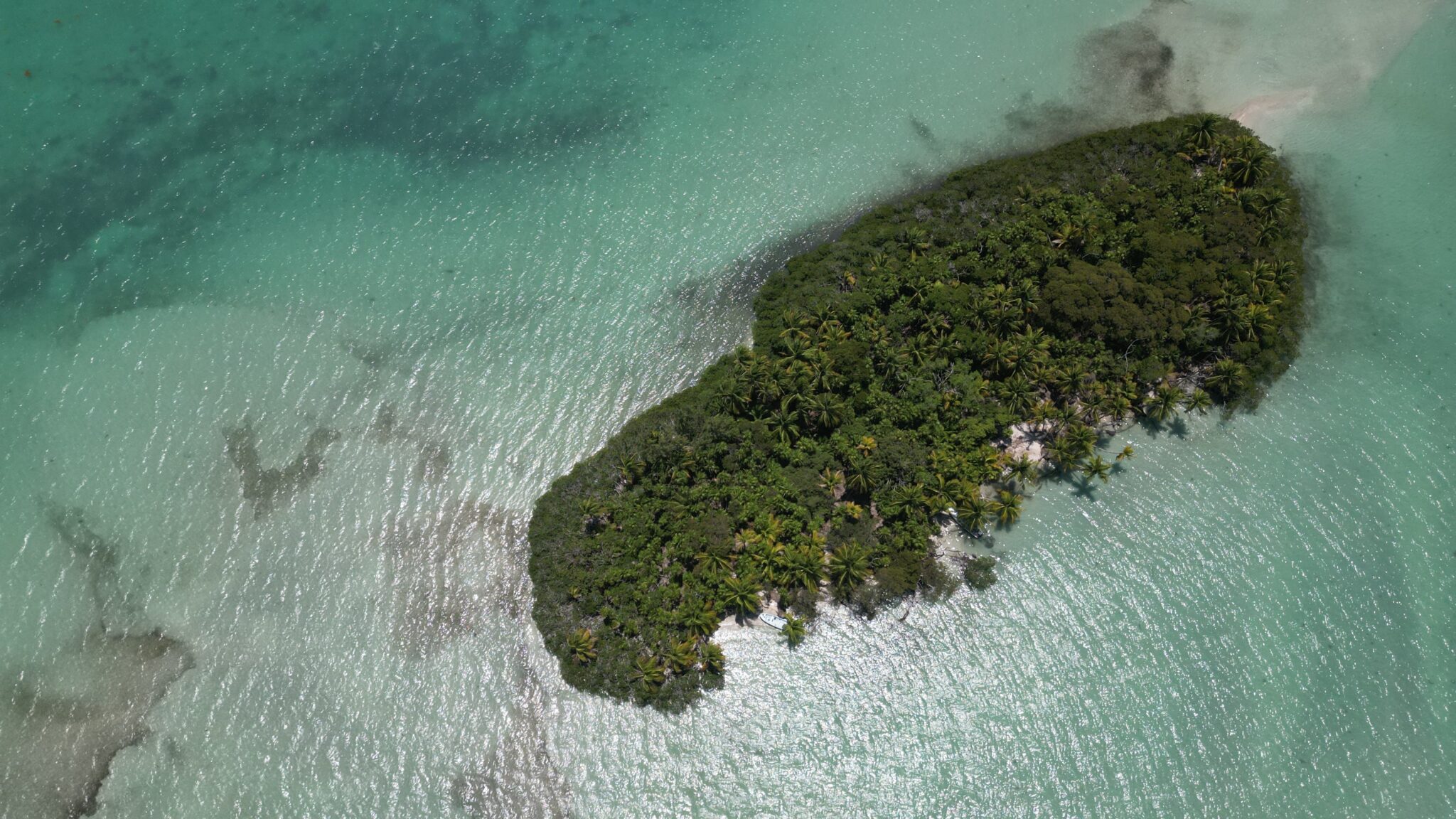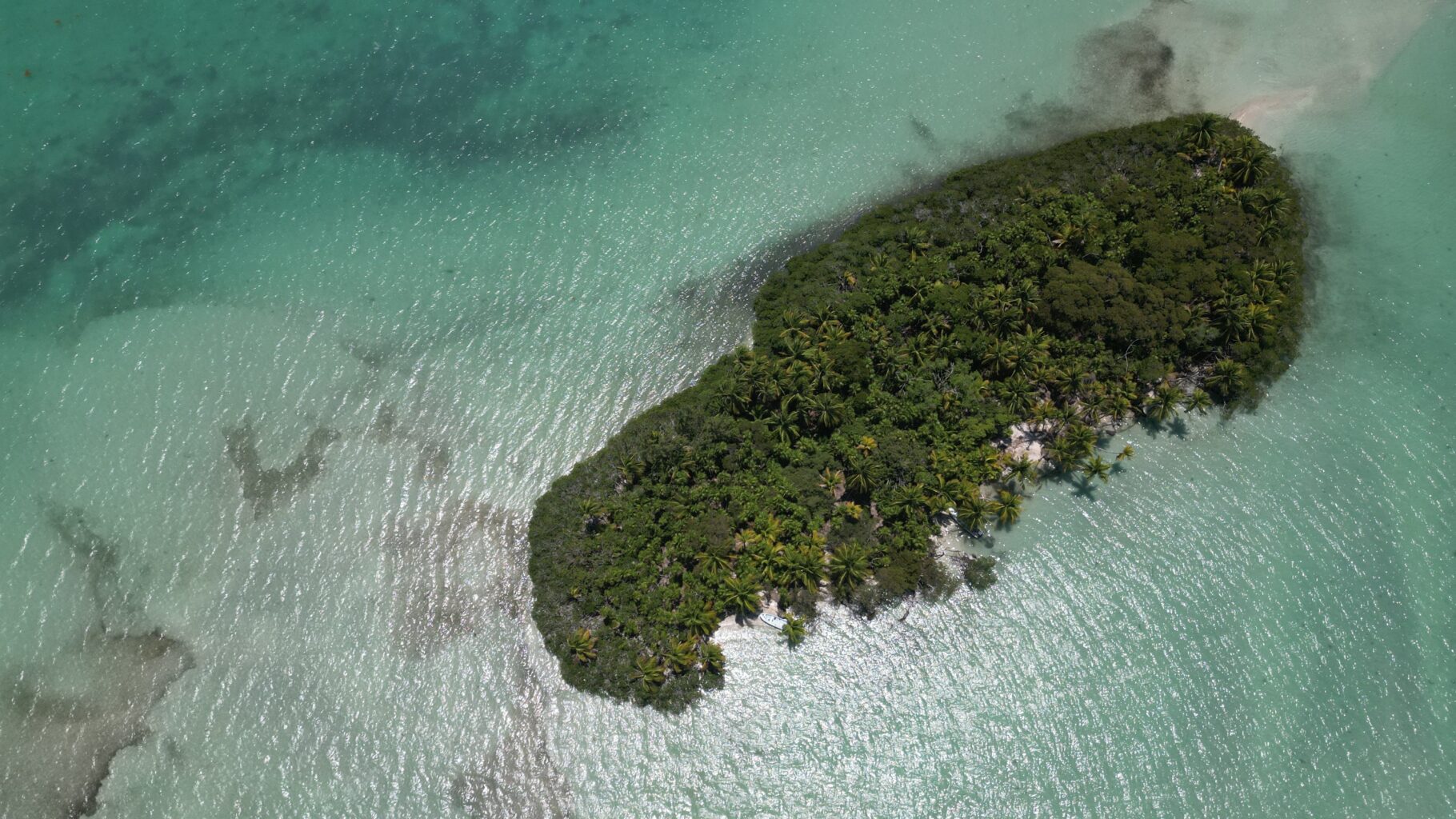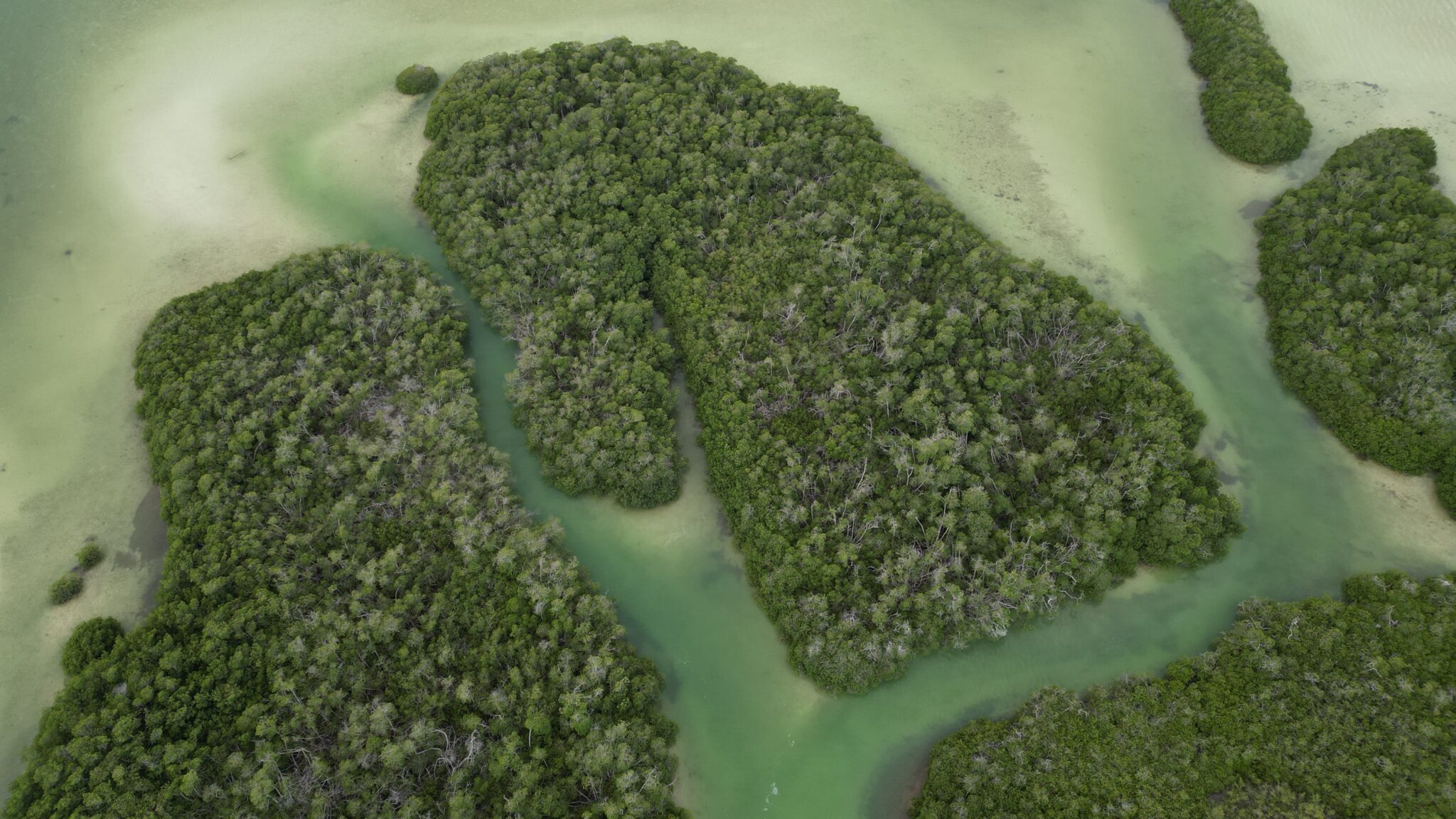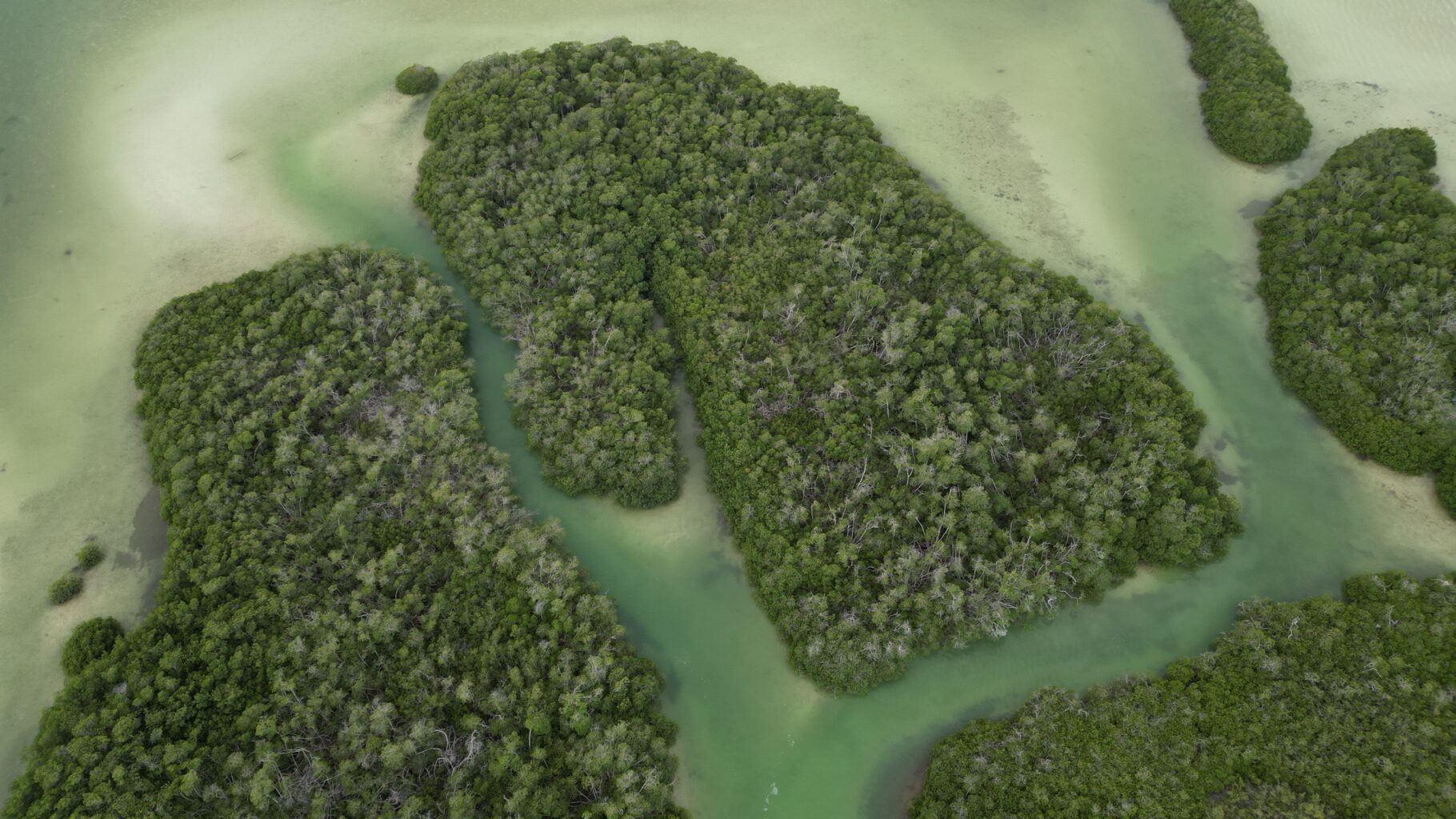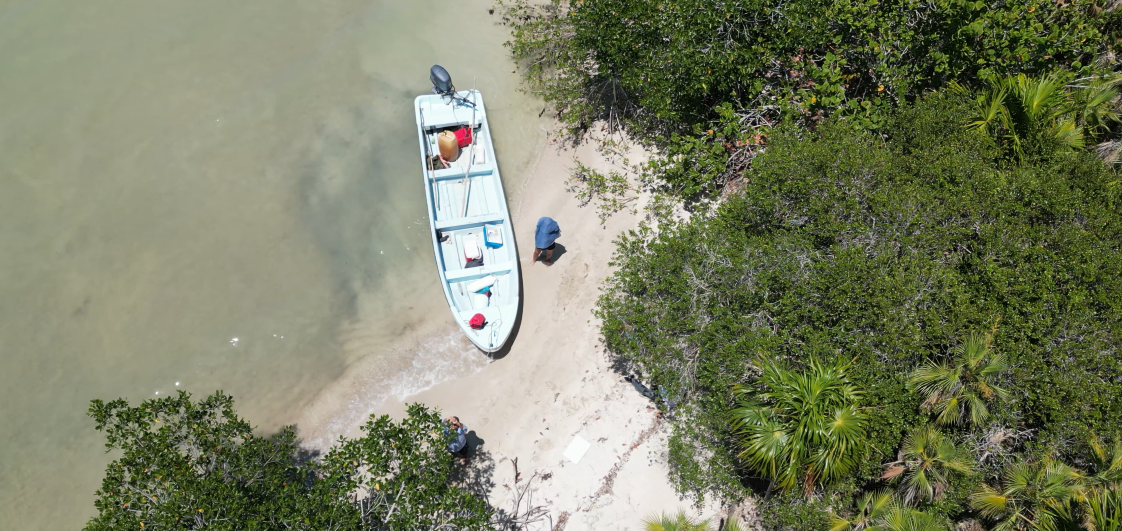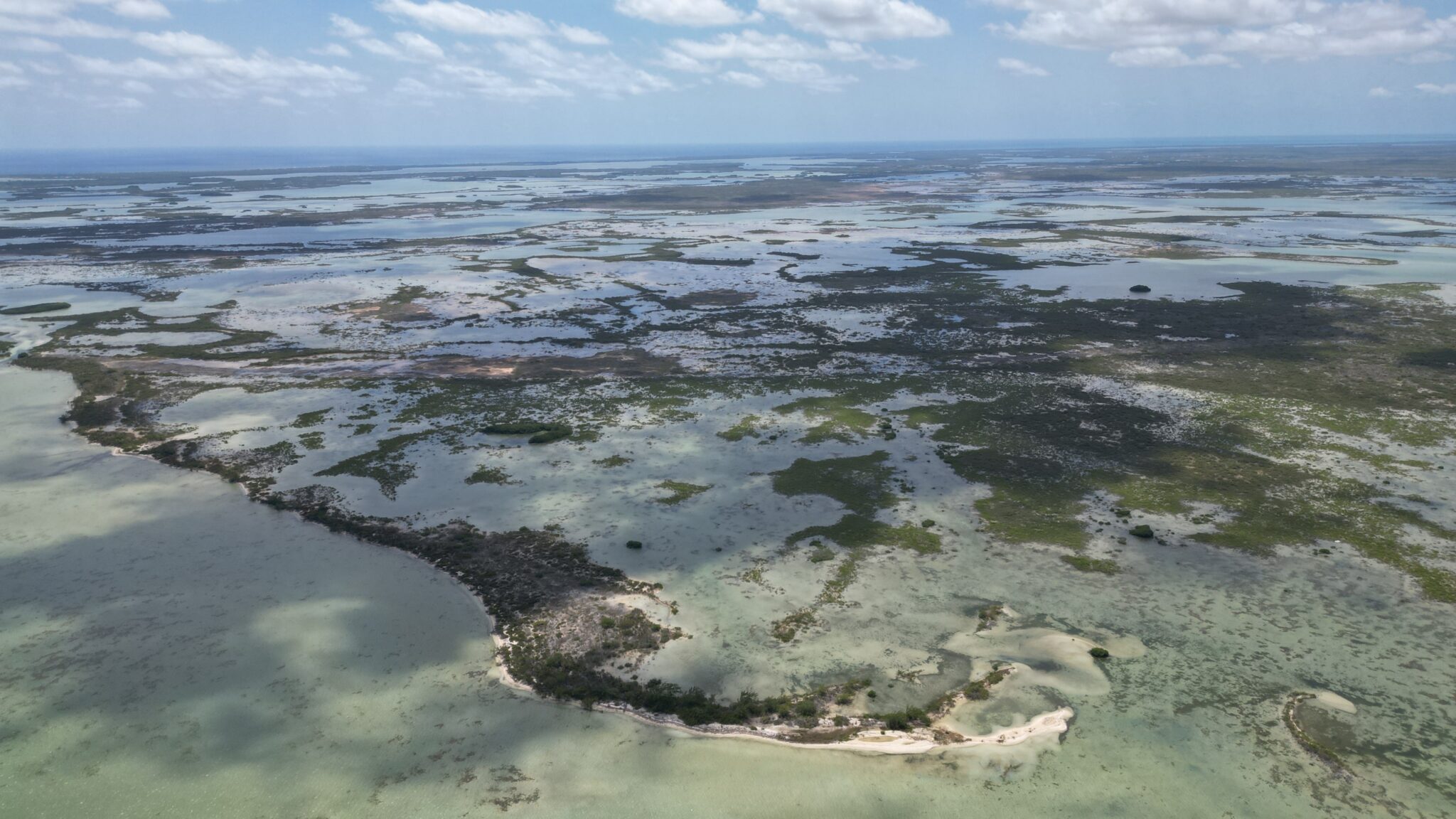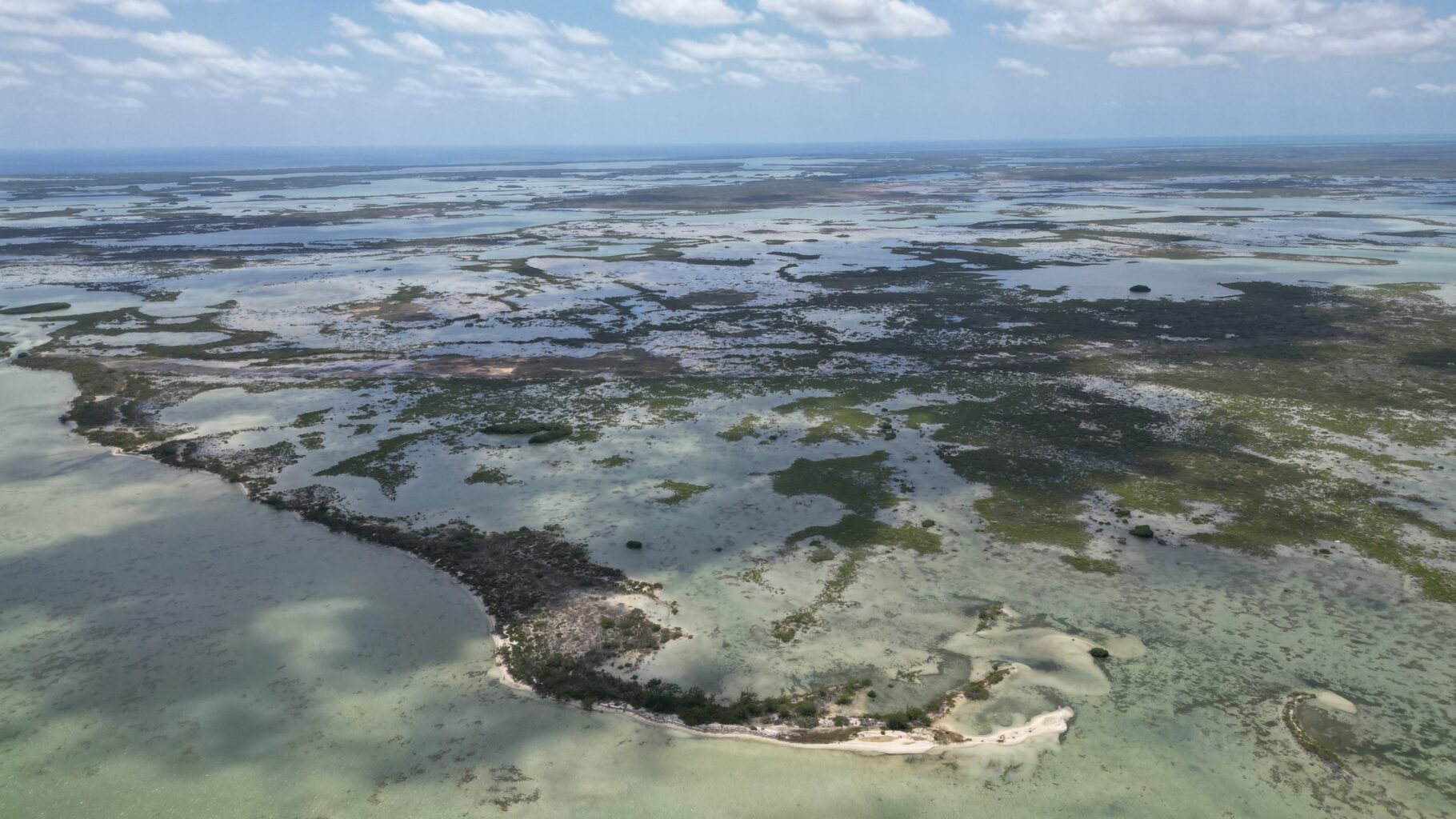Thousands of small islands, or keys, crowd Mexico’s Caribbean coast. They range in size from tiny (smaller than a suburban back yard) to around 125 acres. The Mexican government owns them, but as development in the area heats up, private buyers are snapping up whole islands. There are plans for large-scale tourism, including a tourist train that will slice through the forests of the Yucatan Peninsula.
The keys are ecologically significant, and this government sell-off threatens to cause serious damage. Forests—especially mangrove forests—could be destroyed to make way for resorts or second homes.
Mangroves make up the predominant vegetation of these keys. The crucial benefits of mangroves are well known: They serve as nurseries for reef fish, prevent erosion (especially important for small, low-lying, sandy islands), mitigate storm damage, and store large amounts of carbon. The mangrove-lined keys also provide a home for large numbers of resident and migratory birds; close to 100 species have been counted. The huge magnificent frigatebird is common; other species are threatened or rare in Mexico, including the blue-winged teal, brown pelican, and wood stork. Mexico’s most important populations of the American crocodile are found on offshore islands, according to the IUCN.
Working with local partner GeoAlternativa, this project is seeking legal protection for more than 1,500 of Mexico’s Caribbean keys. Our project partners will formally ask Mexico’s government (the National Commission on Natural Protected Areas) to make all of these keys part of the Maritime – Terrestrial Federal Zone. That would allow sustainable uses on the keys, but no sales to private parties.


